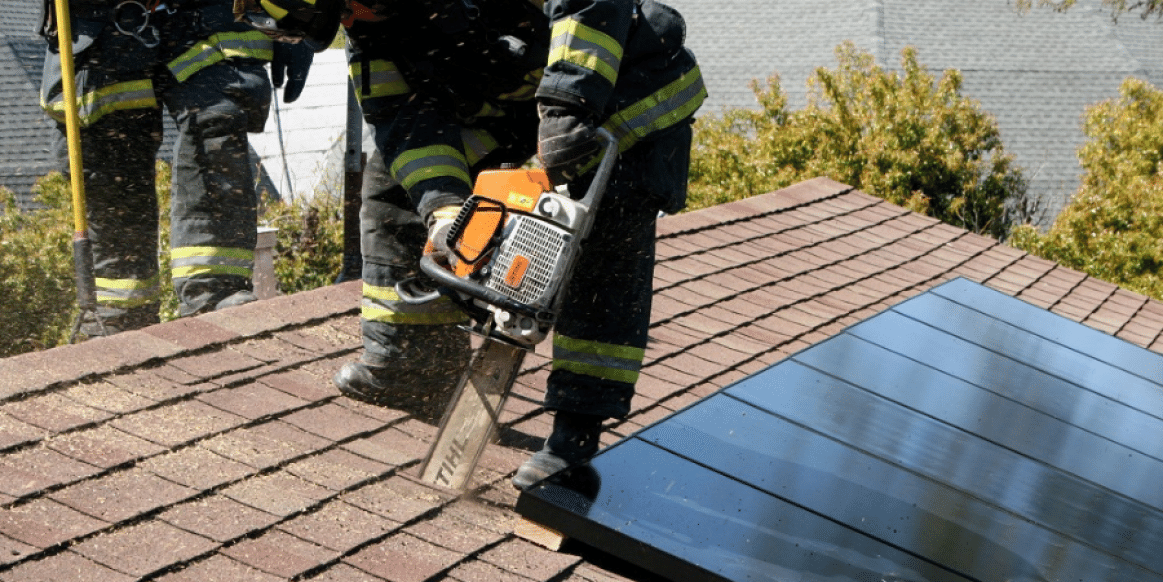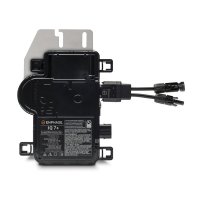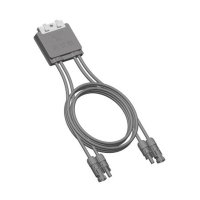
Who are the NFPA and UL?
The majority of US solar installers and electricians are familiar with The National Electric Code (NEC). It is published every three years by the National Fire Protection Association (NFPA). The NEC handbook aims to prevent electrical fires by fostering clarity and safety to national electrical standards. Another safety standard for the solar industry is Underwriters Laboratories Inc. (UL), which has more than 1,000 safety standards including standards for PV-related products. UL’s standards are in place to ensure public safety, reduce costs, and improve the quality of products and services. Both NFPA’s NEC and UL’s standards are in place for safety reasons, to ensure the protection of home and business owners, first responders, and improve the U.S. solar market.
What are module-level shutdowns and UL 37.41’s Standards?
The NEC 2017 publication is important for the U.S. solar industry because of its updates to the rapid shutdown requirements. A rapid shutdown is when all conductors within an array’s one-foot boundary have to be reduced to 80 V or less within 30 seconds upon initiation. This requirement was added to the NEC handbook to protect first responders from potential shock hazards transmitted from the solar array while entering a building in an emergency situation. NEC’s 2017 module-level shutdown requirements were rapidly implemented after it was published, and remain in effect today in many states.
UL took the 2017 NEC update seriously and started working on a UL Standard for fire safety, this standard is 37.41. According to UL’s Website, “UL 37.41 is intended to establish and expand requirements for the evaluation of a module rapid-shutdown that can keep firefighters out of hazardous current paths while responding to emergency situations in homes and buildings with PV systems”. This UL Standard was later added to the NEC 2020 publication in section 690.12(B)(2). This offered an alternative for meeting the original NEC rapid shutdown requirements.
UL 37.41 as an alternative to module-level shutdown and what this means for contractors
UL 37.41 is an expansion of the NEC’s module-level shutdown requirements. The addition now allows installers to use UL 37.41-compliant hazard control systems, which are UL-listed to meet rapid shutdown requirements. NEC’s hazard controls systems list added UL 37.41 compliant systems which expanded the options of solar equipment that can be used to meet the rapid shut down requirements. This 2020 NEC update was adopted in a few states across the U.S. when first published, and is continuing to become accepted in additional states.
UL 37.41 was created to be an alternative to module-level rapid shutdown requirements and became an extension of it during the 2020 NEC publication. Multiple states are continuing to adopt the 2020 NEC. The rapid shutdown requirements are in place to ensure the safety of first responders and all that will come in contact with the PV system to make these already-safe solar systems even safer. With the inclusion of UL 37.41, contractors can present more product options to home and business owners looking to add solar to ensure the array meets safety requirements.


Comments
This article repeated vague statements multiple without giving any real specifics of the concepts or hardware being developed in response to this new standard. This is not unique-- many articles I have reviewed do much the same. Also, I am looking at the UL website right now and I believe the standard is number 3741, not 37.41. This article is just not that helpful.
Yes, thanks for the feedback - this article definitely needs some attention to be more useful. Even though we produce a great number of plan sets every month, we still don't see many (if any) practical applications of the 3741 code. Here are three practical barriers we see to implementing UL 3741 on commercial roofs:
Roof Characteristics and Structural Limitations: Commercial buildings have diverse roof designs, materials, and structural capacities. Implementing UL 3741-compliant PV systems requires careful consideration of these factors. For instance, the additional weight of safety equipment (like rapid shutdown devices) and solar panels must be supported by the roof structure. Older buildings might not have the necessary structural integrity to support these additions without significant modifications. Additionally, the layout of the roof can impact the installation process. Features like skylights, HVAC units, and varying roof angles can complicate the placement and wiring of PV systems in compliance with UL 3741.
Integration Challenges with Existing Electrical Systems: Commercial buildings often have complex electrical systems already in place. Integrating a UL 3741-compliant solar PV system into this existing framework can be challenging. It requires ensuring that the new system does not interfere with the building's electrical safety, operation, and efficiency. This integration must be done in a way that maintains compliance with not only UL 3741 but also with other relevant electrical codes and standards. Retrofitting older buildings with modern, compliant PV systems can be particularly challenging, as their original electrical infrastructure may not have been designed with solar integration in mind.
Cost and Economic Viability: The economic aspect is a significant barrier. Compliance with UL 3741 can increase the initial investment cost due to the need for specialized components, such as module-level power electronics for rapid shutdown and additional safety features. These costs can be a deterrent, especially for businesses operating with tight budgets or those that are unable to realize a quick return on investment. Additionally, the long-term maintenance and potential upgrades required to keep the system compliant can add to the overall financial burden.
In summary, the main practical barriers in the built environment for implementing UL 3741 on commercial roofs are related to the structural and design limitations of existing buildings, the complexities involved in integrating new systems with existing electrical (and mechanical) infrastructure, and the increased costs associated with compliance (and brand new products). So, folks are likely to just keep using module-level devices as their price drops or implement well-understood NEC 2024 workarounds.
As PV becomes more of an architect-specified building system, we expect to see more roofs designed from the start to take advantage of UL 3741.